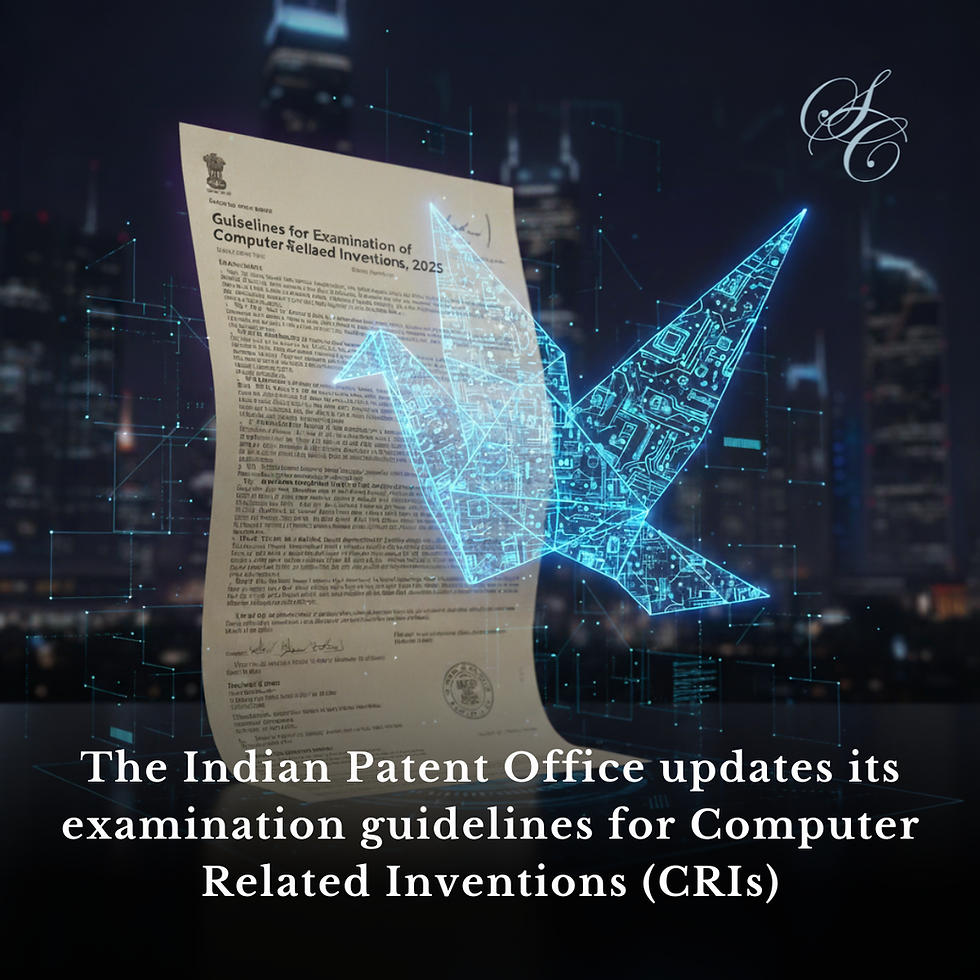Obtaining a Trade Mark Registration in India—Differences Compared to the United States of America
- Sarwajeet Singh
- Dec 6, 2016
- 3 min read
This post outlines the major differences between procedures involved in obtaining a trade mark registration in the United States of America and India.
In both countries, only a person with a bona fide intention to use a mark can apply to register it. However, while the United States Patent and Trade Mark Office (“USPTO”) asks for a declaration, made under penalty of perjury, attesting to such bona fide intention, the Trade Marks Registry (“TMR”) does not require such a declaration. Proof of lack of such bona fide intention can have serious consequences in both countries such as invalidation of the resulting registration.
In both countries, applications can be filed on the basis of use or proposed use. If filing on the basis of use in the United States of America, an applicant must be using a mark in inter-state commerce or in commerce between the United States of America and a foreign country. Any intra state use is not counted. In India, however, there are no such requirement of inter-state use or use in foreign commerce, as long as a mark is used commercially.
In India, it is not necessary to file evidence of use of a mark before obtaining a registration. In the United States of America, however, it is necessary to show use before obtaining a registration subject to some exceptions.
Technically speaking, in India, an application can cover class headings. However, in the United States of America, class headings or broad descriptions of goods/services are impermissible. For example, “clothing” will not be acceptable in the United States of America. Each item of clothing must be listed out.
In India, responses to Examination Reports must be filed within 1 month or an extension to file a response must be sought. In the United States of America, applicants have 6 months to file responses. No extensions are available. Also, in India, the TMR only issues one Examination Report, unlike the USPTO, which issues more than one. If the USPTO is dissatisfied with arguments filed in a response to an Examination Report, it issues a final Office Action, giving an applicant one more opportunity to file arguments. This is not so in India. Applicants get one opportunity to file responses in writing. If the Registrar is not satisfied with the written arguments, he/she may schedule an oral hearing at which an applicant can present his/her case. The Registrar will typically make a decision at the oral hearing.
Furthermore, in the United States of America, an abandoned application may be revived under certain circumstances. In India, however, it is not possible to revive an abandoned application.
As regards oppositions, in India, applications are open to oppositions for a 4 month period counted from the date of publication. No extensions are allowed. On the other hand, in the United States of America, an application is open for opposition for 30 days from the publication date. Extensions are available, but only for a maximum period of 180 days.
In both countries, applications are examined on formal and substantive grounds, published and Certificates of Registration issued. In the United States of America, however, there is one additional step, namely, the issuance of a Notice of Allowance. This step occurs after publication, and gives an applicant 6 months to file evidence of use of a mark. The 6 month period is extendible for a total of 36 months.
Both countries allow applicants to delete goods/services or an entire class from an application. However, in India, an entire class must be deleted only pursuant to division of an application, and letting the divided application with the class that is to be deleted become abandoned. There is no need to divide before deleting a class in the United States of America.
Awareness about these differences can help in effective prosecution of applications in both countries.




Comments